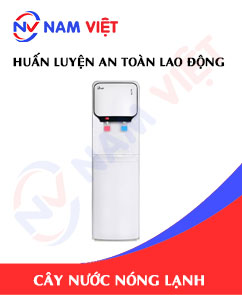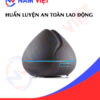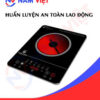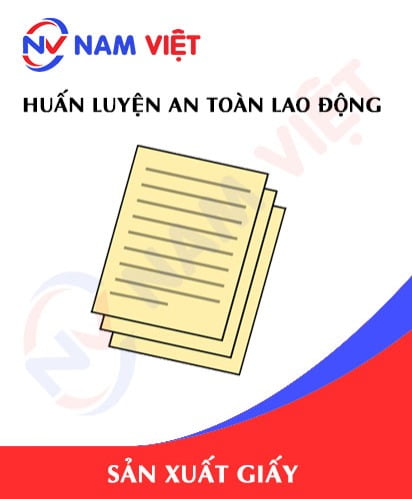Occupational Safety Training in Hot and Cold Water Dispenser Manufacturing
99,000 ₫
Note: The above price is calculated for one person, the price may fluctuate depending on the number of trainees participating in the course and depending on market movements. For more accurate pricing support, please refer to the quotation table or contact our consulting staff directly.
Occupational safety is an important issue in hot and cold water dispenser manufacturing factories and needs to be addressed promptly to ensure the health and safety of workers, and to enhance the reputation of businesses. The Occupational safety training course is one of the effective solutions to raise awareness about accident prevention for workers participating in hot and cold water dispenser manufacturing.
Table of Contents
Toggle1. Overview of Hot and Cold Water Dispensers
a. What is a Hot and Cold Water Dispenser?
A hot and cold water dispenser (Hot and Cold) is an automatic drinking water device designed to provide both hot and cold water through a single unit. Typically, hot and cold water dispensers have two separate faucets, one for hot water and one for cold water.
Hot and cold water dispensers are commonly used in offices, restaurants, hotels, and other public areas. They offer a convenient solution for employees, customers, and hotel guests to easily and quickly obtain hot or cold drinking water.
These devices usually feature a large water tank and are equipped with temperature control systems to regulate the hot and cold water. Some hot and cold water dispensers also include water filtration functions to provide users with cleaner and safer water.
Currently, there are many types of hot and cold water dispensers on the market with different designs and features, allowing users to choose a device suitable for their needs.

b. Machinery Used in Hot and Cold Water Dispenser Production
A hot and cold water dispenser is a complex product manufactured and assembled through various technological steps. The production and assembly process typically includes fabricating the water tank, producing the temperature control system and water faucets, assembling components, and performing final product quality checks.
Machinery involved in the production and assembly process may include:
- Metalworking machines: used to manufacture metal components of the dispenser, including the water tank, pipes, and other parts.
- Plastic injection machines: used to produce plastic parts of the dispenser, including faucet components and caps.
- Die-casting machines: used to produce metal components such as temperature control parts and other details.
- Wire cutting machines: used to cut and connect electrical wires for the electronic components of the dispenser.
- Welding machines: used to weld metal parts of the dispenser together.
- Quality inspection machines: used to check the final product quality, including water pressure and temperature tests.
In practice, the types of machinery used in production and assembly vary depending on the production scale and technology of each manufacturer. However, all of these machines play a critical role in ensuring high-quality products that meet customer needs.

c. Hot and Cold Water Dispenser Manufacturers in Vietnam
Currently, there are many well-known hot and cold water dispenser brands in Vietnam with good quality, meeting consumer demand. Some notable brands include:
- Ariston: a famous Italian brand, imported and widely distributed in Vietnam. Ariston products feature modern designs, smart functions, and consistent hot water quality.
- Panasonic: a renowned Japanese brand producing and distributing various electronics and home appliances in Vietnam. Panasonic’s hot and cold water dispensers are designed for convenience and meet consumer needs.
- Kangaroo: a well-known Vietnamese household appliance brand, including hot and cold water dispensers. Kangaroo products are manufactured using advanced technology, ensuring quality and safety.
- Ferroli: an Italian brand specializing in energy and household products. Ferroli hot and cold water dispensers have elegant designs and meet consumer demands.
- Haier: a Chinese household appliance brand, present in the Vietnamese market with high-quality products. Haier dispensers feature smart functions and meet user needs.
This list represents only some of the well-known brands in Vietnam. Many other brands also produce and distribute high-quality hot and cold water dispensers. When selecting a product, consumers should carefully consider quality, features, and pricing.
d. Specific Jobs in a Hot and Cold Water Dispenser Factory
Group 1
- Chief Executive Officer, Deputy CEO, and department heads in the hot and cold water dispenser factory.
Group 2
- Safety officers: manage safety within the factory, design safety procedures, monitor and enforce employee compliance with safe working practices.
Group 3
- Procurement of raw materials: a team responsible for sourcing and purchasing the necessary materials for production, including electronic components, thermometers, plastic, steel, and copper.
- Component production: the parts of the product are manufactured through various processes such as cutting, bending, welding, casting, plastic injection, and assembly.
- Product assembly: once the components are produced, workers assemble the final product and perform quality checks to ensure it functions properly and meets safety and quality standards.
- Product testing: dispensers are tested before shipment to ensure they meet operational, safety, quality, and energy efficiency standards.
- Packing and shipping: after testing, products are packaged and delivered to distributors or end customers.
Group 4
- Office work, support, sales, marketing.
- Production management, quality management, human resources management, materials management, financial and accounting management.
- Product design: a team of engineers creates technical drawings, hardware layouts, and processor designs to ensure products meet technical, safety, and quality standards.

2. Overview of Occupational Safety Training for Hot and Cold Water Dispenser Production
In this article, we focus on issues related to Group 3, as they are directly involved in production and face the highest occupational safety risks. For information on other groups, see here.
a. What is Group 3 Occupational Safety Training?
- Group 3 Occupational Safety Training consists of sessions designed to raise awareness among workers about accident prevention.
- The training helps workers identify hazards, prevent risks, and reduce the likelihood of workplace accidents.
REGISTER FOR OCCUPATIONAL SAFETY TRAINING SERVICE
b. Training Duration
Initial Occupational Safety Training
- Total training time is at least 24 hours, including examination time.
- 8 hours of theoretical lessons on policies, laws, and occupational safety regulations
- 8 hours of theoretical lessons on basic occupational safety knowledge
- 4 hours of theoretical lessons on specialized training content
- 2 hours of practical lessons on specialized training content
- 2 hours of final theoretical examination
The safety training center will distribute the training time into multiple sessions depending on employee scheduling. Typically, there are 6 sessions over 3 days, provided the company can arrange continuous training.
Periodic Occupational Safety Training
- Before the occupational safety card expires, workers must complete periodic occupational safety training, with the periodic training duration being at least 50% of the initial training duration.
Explanation: the total duration of periodic occupational safety training is at least 12 hours, including examination time. Upon completing the periodic training and passing the exam, workers will have their occupational safety card renewed.
c. Training Content
| No. | TRAINING CONTENT | TRAINING DURATION (HOURS) | |||
| Total | Including | ||||
| Theory | Practical | Test | |||
| I | Policies, laws on occupational safety and hygiene | 8 | 8 | 0 | 0 |
| 1 | Overview of legal documents on occupational safety and hygiene. | 6 | 6 | ||
| 2 | Standards and technical regulations for occupational safety and hygiene. | 1 | 1 | ||
| 3 | Specific regulations from state management agencies regarding new construction, expansion, or renovation of facilities, production, use, storage, and inspection of machinery, equipment, materials, and substances requiring strict occupational safety and hygiene. | 1 | 1 | ||
| II | Basic knowledge of occupational safety and hygiene | 8 | 8 | 0 | 0 |
| 1 | Basic knowledge of hazardous and harmful factors in the workplace. | 4 | 4 | ||
| 2 | Methods to improve working conditions. | 1 | 1 | ||
| 3 | Safety culture in production and business. | 1 | 1 | ||
| 4 | Rights and obligations of employers and employees; occupational safety policies and systems; functions and duties of safety network members. | 1 | 1 | ||
| 5 | Occupational safety rules, safety signs, instructions, use of safety equipment and personal protective gear; accident first aid and occupational disease prevention skills. | 1 | 1 | ||
| III | Specialized training content | 6 | 4 | 2 | 0 |
| Comprehensive knowledge of machinery, equipment, and substances causing hazardous or harmful factors; risk analysis, evaluation, management of occupational safety, safe working procedures with machinery, equipment, and substances requiring strict safety regulations. | 6 | 4 | 2 | ||
| IV | End-of-training safety assessment | 2 | 2 | 0 | 0 |
| Total | 24 | 22 | 2 | ||
See more training content for all 6 groups
d. Occupational Safety Card
After completing occupational safety training and passing the exam, workers will be issued an occupational safety card (commonly called Group 3 safety certificate).
The Group 3 safety card displays information such as full name, date of birth, job, and specific working environment. It also includes training duration, official stamp, and signature confirming course completion.
According to Clause 2 of Article 24, Decree 44/2016/ND-CP, there are two cases:
- If the employer and employee have a labor contract, the employer must sign, stamp, and authenticate the safety card for the Group 3 trained employee after completing the training and passing the exam.
- If the worker is freelance or temporary and does not have a labor contract, the training unit must sign, stamp, and authenticate the safety card after the worker completes the training and passes the exam.

3. Identifying Hazards Affecting Workers During Hot and Cold Water Dispenser Production
During the production of hot and cold water dispensers, workers may face various potential hazards that affect their health and occupational safety. Below are some hazards that need to be identified:
- Risk of electric shock: Workers in hot and cold water dispenser factories often work with electronic devices and electrical circuits. Failure to follow proper procedures and safety regulations may result in the risk of electric shock.
- Risk of machinery accidents: During production, workers often operate machinery, equipment, and industrial tools. If safety regulations are not followed and proper training is not provided, workers may face the risk of accidents, injuries, or fatalities.
- Risk of exposure to hazardous chemicals: During production, chemicals such as cleaning solutions, adhesives, plating coatings, paints, and detergents may pose a risk of exposure if not used or stored properly.
- Risk of injury due to improper handling: Workers must handle various tools, materials, and equipment. Without proper training and adherence to safety rules, they may suffer injuries from improper handling.
- Risk of noise impact: Equipment and machinery in hot and cold water dispenser factories generate noise that may affect workers’ hearing if protective measures such as earplugs are not used.
4. Common Workplace Accidents for Workers During Hot and Cold Water Dispenser Production
Common workplace accidents for workers during hot and cold water dispenser production may include:
- Physical accidents: Includes machinery-related accidents such as crushing, cuts, impacts, and punctures by rivets or materials.
- Chemical accidents: Includes accidents caused by exposure to hazardous chemicals, working in toxic or polluted environments.
- Electrical accidents: Includes accidents caused by contact with electrical sources, improper use of electrical devices, or short circuits.
- Thermal accidents: Includes accidents caused by working in hot environments, using hot equipment, or fire and explosions.
- Occupational safety accidents: Includes accidents caused by not wearing sufficient protective gear or working in unsafe conditions.

5. Safety Measures During Hot and Cold Water Dispenser Production
To ensure occupational safety during production, workers should follow these safety measures:
- Wear full personal protective equipment: Including helmets, safety glasses, masks, gloves, safety shoes, and protective jackets. Workers must ensure proper use and completeness of protective gear to prevent injuries.
- Follow production procedures: Production processes and machinery use must follow manufacturer guidelines to ensure worker safety.
- Conduct maintenance checks: Ensure machinery and equipment are regularly inspected and maintained for safe operation.
- Perform regular occupational safety inspections: Factories must conduct periodic safety checks to detect and address safety issues during production.
- Occupational safety training: Workers should be trained in safety procedures, techniques, and safety management.
- Use quality products: Use quality and proper materials to ensure safety for both workers and end users.
- Supervise occupational safety: Factory management must monitor and ensure safety to prevent workplace accidents.
- Periodically conduct occupational environment monitoring in factories, collect and analyze harmful factors, and adjust to reduce hazards to prevent occupational diseases.
6. Benefits of Occupational Safety Training for Hot and Cold Water Dispenser Production
An Toan Nam Viet provides businesses with the following benefits after completing occupational safety training courses according to Decree 44/2016/ND-CP on occupational safety and hygiene:
- Workers can identify potential accident risks and take preventive measures to avoid workplace accidents.
- Businesses can establish risk prevention measures in production, operation, and maintenance processes.
- Reduce costs associated with potential safety risks in the workplace.
- Continuous production improves labor productivity and product quality.
- Compliance with labor safety regulations to avoid legal risks.
- Enhance credibility and professionalism, elevating the enterprise’s brand.
Nam Viet’s training courses are solutions to prevent and protect individuals from external hazards that may cause injuries or even fatalities.
REGISTER FOR OCCUPATIONAL SAFETY TRAINING SERVICE
7. Customer Feedback After Completing Occupational Safety Training for Hot and Cold Water Dispenser Production
An Toan Nam Viet has many years of experience accompanying enterprises across Vietnam, particularly in southern provinces. This responsibility is invaluable, so our occupational safety training is increasingly professional. Our growth is driven by positive feedback and suggestions from enterprises. Below are testimonials from our clients.
Hoa Dat Construction and Trading Joint Stock Company
“Nam Viet’s service greatly helped us simplify occupational safety and complete safety documentation for work processes. The consultancy team was enthusiastic and timely in answering our questions. Five stars for Nam Viet!”
See more customer interviews after using the service from An Toan Nam Viet
8. An Toan Nam Viet’s Occupational Safety Training Capacity
An Toan Nam Viet is a reputable and high-quality occupational safety training center in Vietnam, with sessions conducted continuously at production workshops, factories, and construction sites across all 63 provinces.
REGISTER FOR OCCUPATIONAL SAFETY TRAINING SERVICE
Occupational Safety Training License
- An Toan Nam Viet has been inspected and certified by the Department of Safety under the Ministry of Labor – Invalids and Social Affairs, granting a certificate confirming eligibility for occupational safety and hygiene training. This further strengthens our occupational safety training capacity.

Training Materials and Lectures
- Before training materials are used in occupational safety training courses, they are reviewed to ensure accuracy and effectiveness.
- Teaching methods are standardized according to An Toan Nam Viet standards, developed by occupational safety experts to maximize knowledge absorption for trainees.
Facilities
- Controlling classroom factors affecting training increases teaching efficiency and knowledge retention.
- Training support facilities include spacious classrooms meeting standards for area, lighting, and training equipment.
9. Nationwide Reputable Occupational Safety Training Center
At An Toan Nam Viet, occupational safety training is a top priority. Teaching workers self-protection knowledge equips them with safety skills for their livelihood and contributes to national development.
We meticulously prepare every detail—from teaching tools and equipment to curriculum, materials, sound, and lighting—to ensure effective training.
Our instructors are experts with years of experience, including research on hazard identification and prevention across industries.
Lectures are practical, engaging, and easy to understand, helping workers comfortably absorb knowledge. Training aligns with Decree 44/2016/ND-CP.
Workers learn preventive measures and self-protection techniques applicable to real work scenarios.
Our training center is proud to provide professional, reliable occupational safety training with advantages such as:
- Competitive training costs while maintaining quality.
- Flexible training schedules according to company production needs.
- Fast certification procedures compliant with law.
- Experienced instructors with long-term expertise.
- Controlled classroom factors enhance teaching efficiency and knowledge absorption.
- Lessons tailored to occupational safety in enterprises.
- An Toan Nam Viet works dedicatedly and professionally to support clients accurately and promptly.

10. Additional References for Occupational Safety Training for Hot and Cold Water Dispenser Production
- Occupational safety materials for hot and cold water dispenser production
- Occupational safety training material set
- Occupational safety training test set
- Occupational safety training curriculum for hot and cold water dispenser production
- Occupational safety multiple-choice test for hot and cold water dispenser production
1 review for Occupational Safety Training in Hot and Cold Water Dispenser Manufacturing
No comments yet















namchinh.haiphong341
Dịch vụ huấn luyện an toàn lao động rất tốt nhé